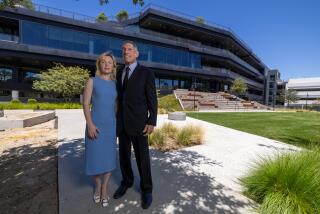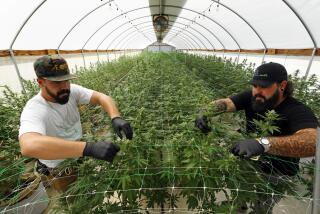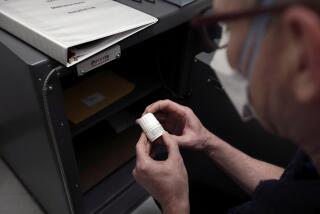UC studies find promise in medical marijuana
With an innovative but little-known state program to study medical marijuana about to run out of money, researchers and political supporters said Wednesday the results show promise.
“It should take all the mystery out of whether it works. We’ve got the results,” said former state Sen. John Vasconcellos, who led the effort to create the 10-year-old Center for Medicinal Cannabis Research.
The center has nearly spent its $8.7-million allocation, sponsoring 14 studies at UC campuses, including the first clinical trials of smoked marijuana in the United States in more than two decades.
Much of the research is still underway or under review, but five studies have been published in scientific journals. Four showed that cannabis can significantly relieve neuropathic pain and one found that vaporizers are an effective way to use marijuana. Another study, submitted for publication, found that marijuana can reduce muscle spasms in multiple sclerosis patients.
Dr. Igor Grant, a neuropsychiatrist at UC San Diego who is the center’s director, called the pain studies “pretty convincing” and urged the federal government to pay for additional clinical studies.
With the state stuck in a daunting budget crisis, even the center’s advocates do not expect more support. “There is no state money at this time, unfortunately,” said state Sen. Mark Leno (D-San Francisco).
Since the center opened in 2000, medical marijuana use has spread rapidly in California, driven largely by doctors’ willingness to recommend it for a wide range of ailments. But little research has been done on its effectiveness, in part because researchers must win approval from federal agencies, including the Drug Enforcement Administration.
Grant said federal officials did not try to thwart the research, but noted that approval typically took 18 months. “We basically did a lot of the work for investigators in terms of jumping through the hoops,” he said.
The unusual scientific program, approved by the Legislature in 1999, was the result of negotiations between Vasconcellos and former Atty. Gen. Dan Lungren. The two were vigorous adversaries in the contentious debate over the 1996 initiative that approved the use of medical marijuana.
Lungren, now a Republican congressman from Gold River, argued that Californians were moving ahead without the research needed to show whether marijuana was useful as a medicine. “I said at that time, if we had scientific evidence, we ought to be guided by scientific evidence,” he said.
“I was shrewd enough to pick up on Lungren’s ‘Let’s do research,’ ” Vasconcellos said. Lungren said he was shrewd enough to accept.
Lungren said the results are helpful, but underscore that medical marijuana should be more tightly controlled and used only where it has been proven effective.
The center funded a range of research, including six studies of whether marijuana reduces neuropathic pain, which is caused by a damaged or abnormally functioning nervous system. A UC San Francisco study of patients with HIV-related pain found that 52% of those who smoked marijuana experienced significant relief.
“I think that clearly cannabis has benefits,” said Dr. Donald I. Abrams, a San Francisco oncologist who led that study. “This substance has been a medicine for 2,700 years; it only hasn’t been a medicine for 70.”
Abrams doubts that the research will alter the debate over marijuana. “Science has not been driving this train for a long time now. I think it’s all politics,” he said.
Grant was more optimistic: “We have a different administration, and they are looking at the science basis of many things.”
He said the research shows marijuana should no longer be classified as a Schedule I drug. “It is not a drug without value,” he said.






